Reviewing Potential PLC Payments
Michael Nepveux
Economist
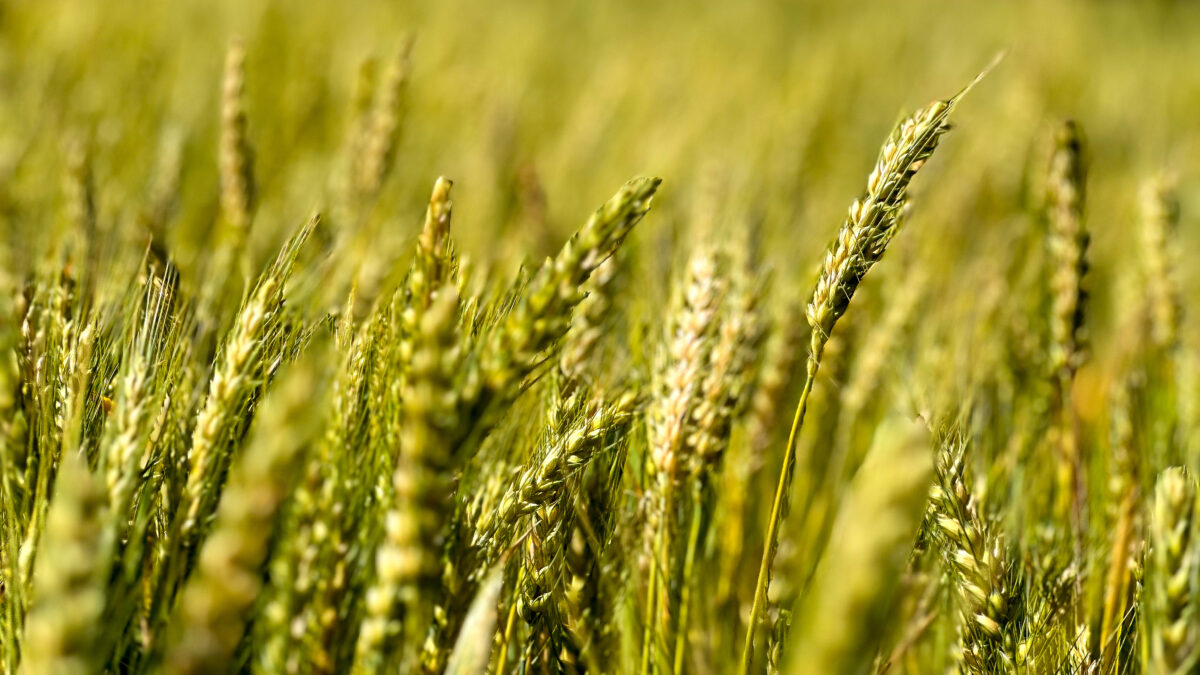
photo credit: AFBF Photo, Morgan Walker
Michael Nepveux
Economist
It’s no secret that the outlook for both old- and new-crop commodity prices has changed dramatically in recent months. USDA’s most recent World Agricultural Supply and Demand Estimates projected lower new-crop prices for corn, soybeans, sorghum, oats, rice and wheat. Only cotton saw higher expected prices due to potential supply impact attributable to drought conditions in the western Cotton Belt. In many cases, the decline in price expectations has been linked to ongoing trade disputes, and has left many in agriculture posing an important question: What can farm programs do?
Two farm bill commodity assistance programs, Agriculture Risk Coverage and Price Loss Coverage, are designed to make payments to producers when national marketing year average crop prices, or crop revenue, falls below certain thresholds. A recent Market Intel (The ARC-Cake is Mostly Baked) revealed that ARC-CO is unlikely to provide much support for old-crop corn, soybeans and wheat, as those marketing year average prices are unlikely to change. Today’s article is the second in a two-part series and reviews how Price Loss Coverage may help offset trade-related price declines.
Price Loss Coverage
PLC payments are triggered when the effective price for a covered commodity falls below a statutory reference price for that commodity. The effective price is the higher of the marketing year average price or the national average loan rate for the covered commodity, so the loan rate serves as a floor for effective prices. PLC reference prices are $5.50/bu for wheat, $4.95/bu for barley, $2.40/bu for oats, $0.2675/lb for peanuts, $3.70/bu for corn, $3.95/bu for sorghum, $8.40/bu for soybeans, $0.14/lb for long grain rice and $0.367/lb for seed cotton.
While old- and new-crop prices have declined in recent months, USDA projected marketing year average prices for all covered commodities are still above the loan rate. Using USDA Farm Service Agency price projections for the 2017/18 and 2018/19 marketing years, Figure 1 examines the current projected PLC rates, and Figures 2 through 5 examine potential payments under the PLC program for several price scenarios. A sensitivity analysis is then conducted to estimate PLC payments under various price declines from the current projected effective price (a not unreasonable assumption, given the current trade uncertainty and volatility in the markets).
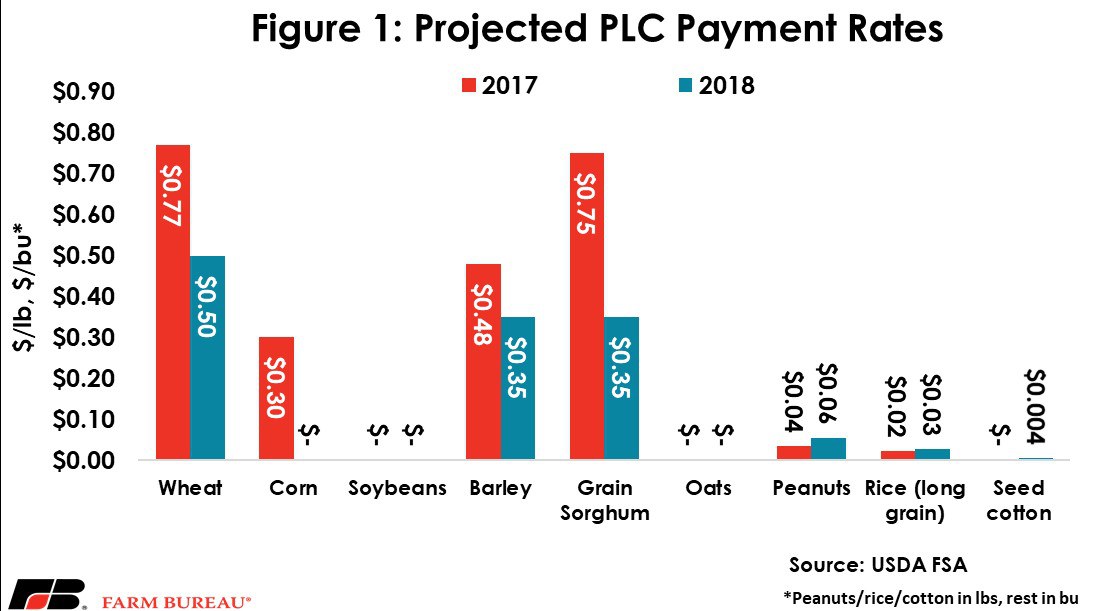
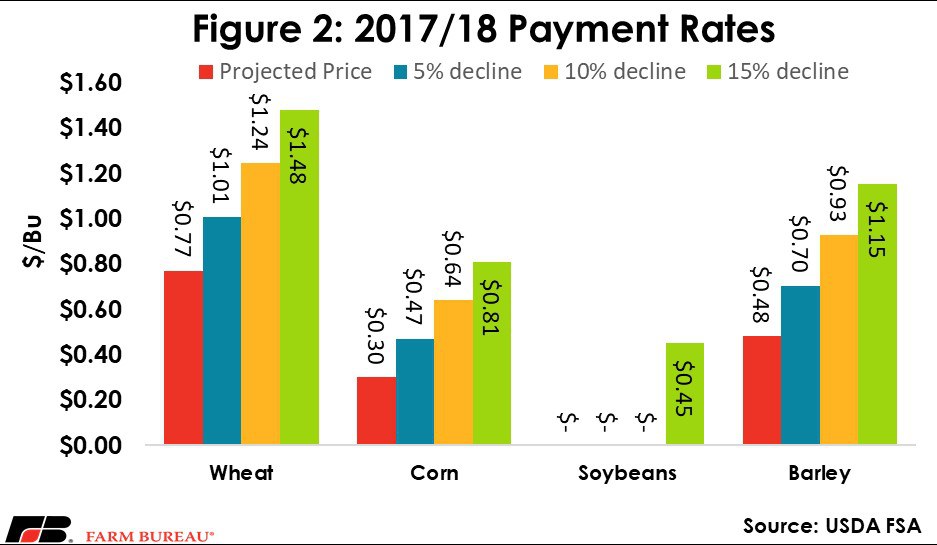
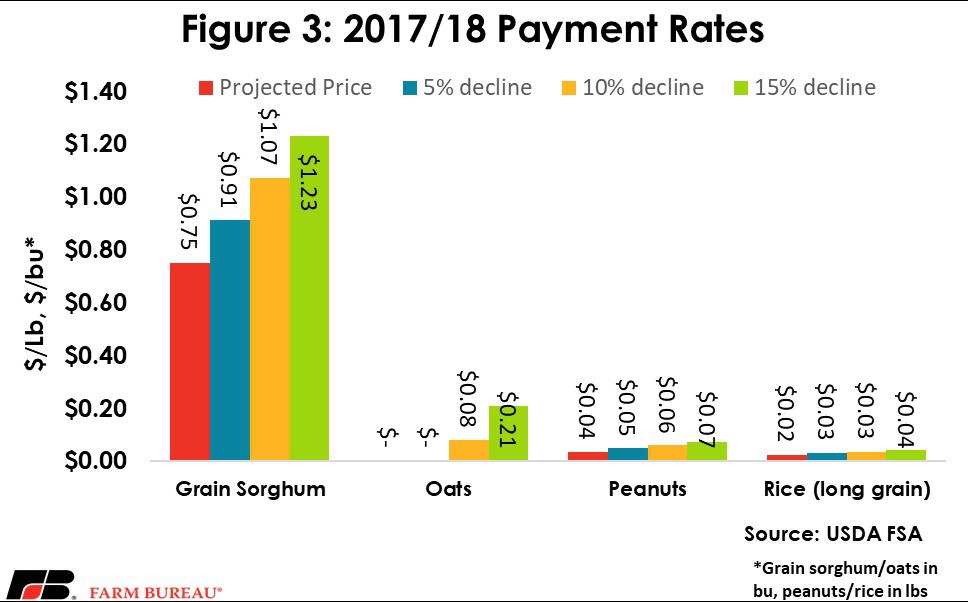
For 2017/18, it would take a 10.2 percent decline in the projected effective soybean price to produce a PLC payment for soybeans in 2017/18. Under current projected prices, the PLC program is expected to trigger payments to farmers with wheat, corn, barley, sorghum, peanut and rice base acres. For several of these crops, the marketing year has already been completed and the bulk of the marketing year is done for the others. Final MYA prices will be published in the coming months, but are expected to fall in line with projected prices.
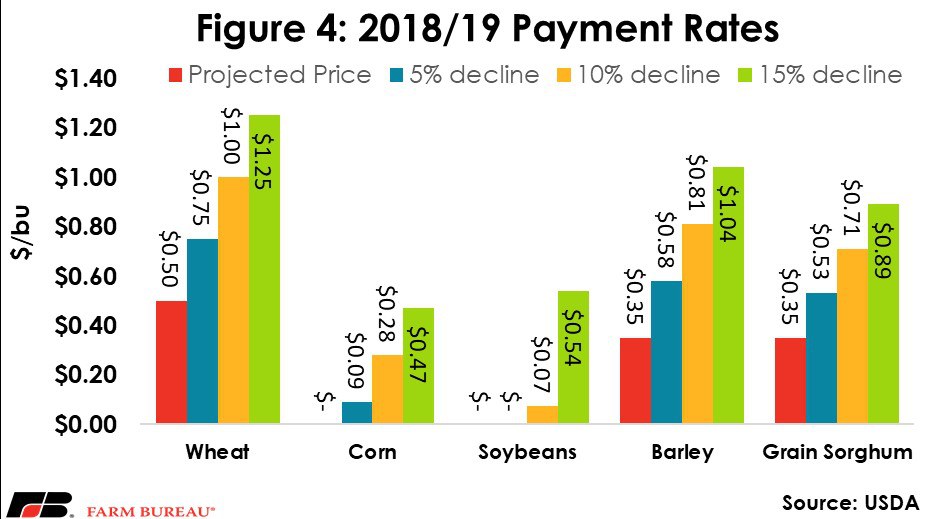
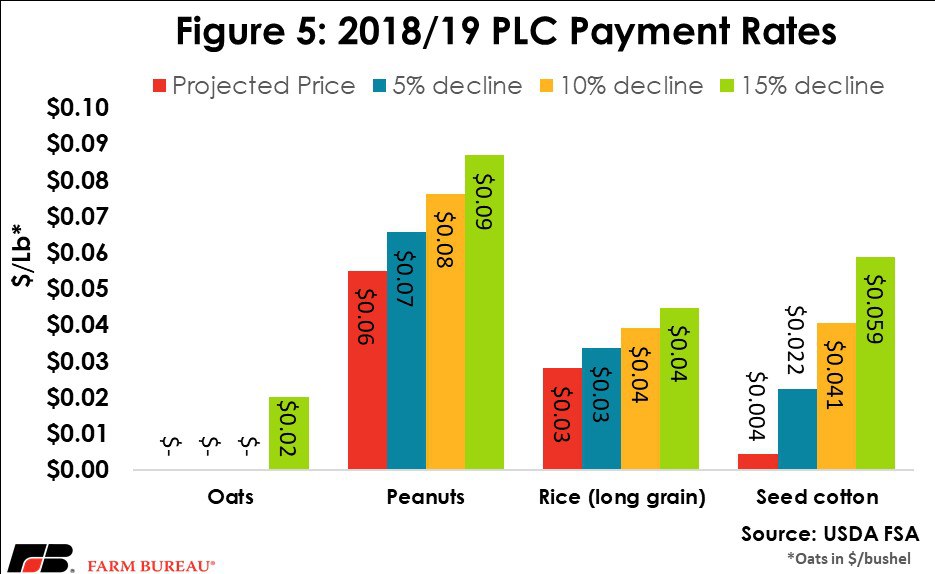
Considerable uncertainty remains for 2018 as the marketing year has recently started for some crops and will start soon for others. Looking at 2018/19, the picture is similar to 2017/18 in terms of which crops will see payments triggered under PLC, with some slight differences. Wheat, barley and grain sorghum will see payments triggered at the current projected prices, but at a lower rate than the previous year on a more optimistic price outlook. Peanuts and rice are instead looking at potential increases in the PLC rates due to a less favorable price environment next year. For the first time, seed cotton is included in PLC projections with payments expected under the current projected price as well.
PLC Payments Only for Farms With Base Acres
An important component of farm bill programs is that program payments are not based on actual plantings, but base acres. In calculating ARC-CO and PLC program payments, the term “base acres” refers to the historical planted acreage on a farm.
The 2014 farm bill provided farmers with a one-time choice between ARC and PLC that would be in effect for the duration of the farm bill. Overall, about 77 percent of base acres were enrolled in ARC-CO and nearly 23 percent were enrolled in PLC.
There are significant differences in election percentages between commodities. Nearly all corn and soybean base acres are enrolled in ARC-CO as opposed to PLC. The opposite is true for peanuts and rice, with effectively all base acres enrolled in PLC. Wheat is split the most evenly, with 56 percent of base acres in ARC-CO and 42 percent in PLC. Barley, grain sorghum, are more evenly split than most program crops, but much less so than wheat (Figure 6).
The impact of these base acreage allocations is that even though PLC is likely to trigger for corn and wheat, a large portion of farmers with those base acres are not eligible to receive program payments. For soybean growers, not only is PLC unlikely to trigger, even if it did, nearly all program acres are in ARC.
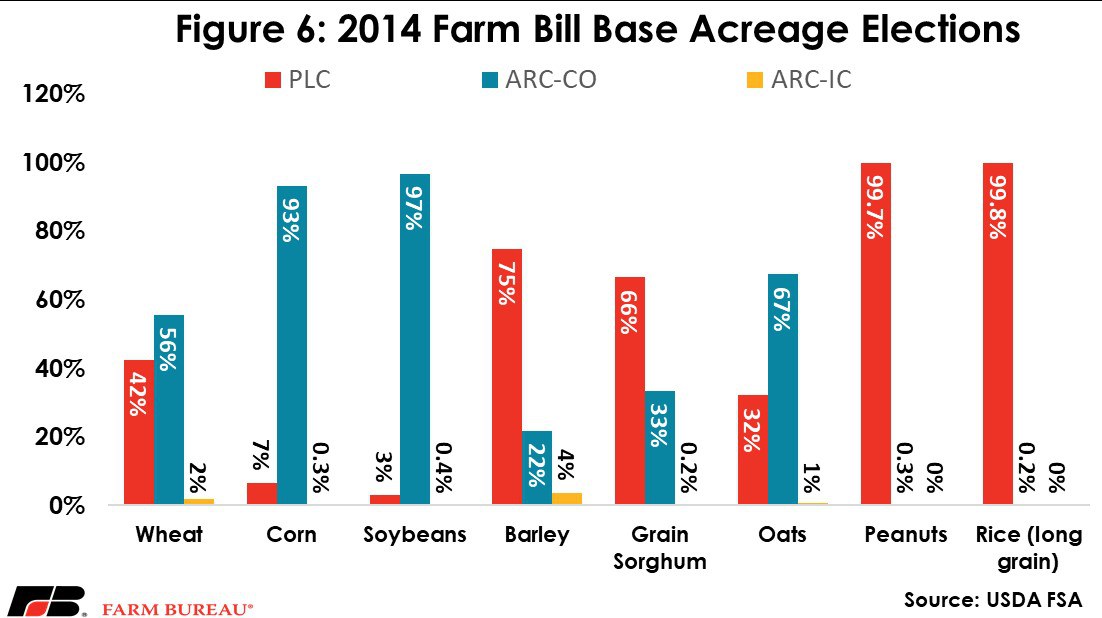
Summary
Based on USDA projections, PLC will trigger for both old- and new-crops. However, for many crops, PLC payments are expected to be lower in 2018/19 than in 2017/18.
Importantly, for corn and soybeans, there is virtually no enrollment in PLC, and with ARC-CO providing little protection there is not much financial relief expected for farmers with corn or soybean base. There is still substantial uncertainty surrounding projected prices for the 2018/19 marketing year. Consumption remains unknown, and exports play a large role in total use as well as ending stocks. If export opportunities continue to deteriorate due to tariff-related headwinds, then prices could move lower. If realized, PLC could provide more support than currently projected – but only for growers with base acres.
Farmers without base acres have only crop insurance or private risk management tools to protect against potential price declines in the coming months. The additional protections recently announced by the administration are separate from the farm bill’s protections, and very much a temporary measure. However, it should provide some shallow-loss support to farmers, an area of loss clearly not covered by ARC or PLC.
Trending Topics
VIEW ALL